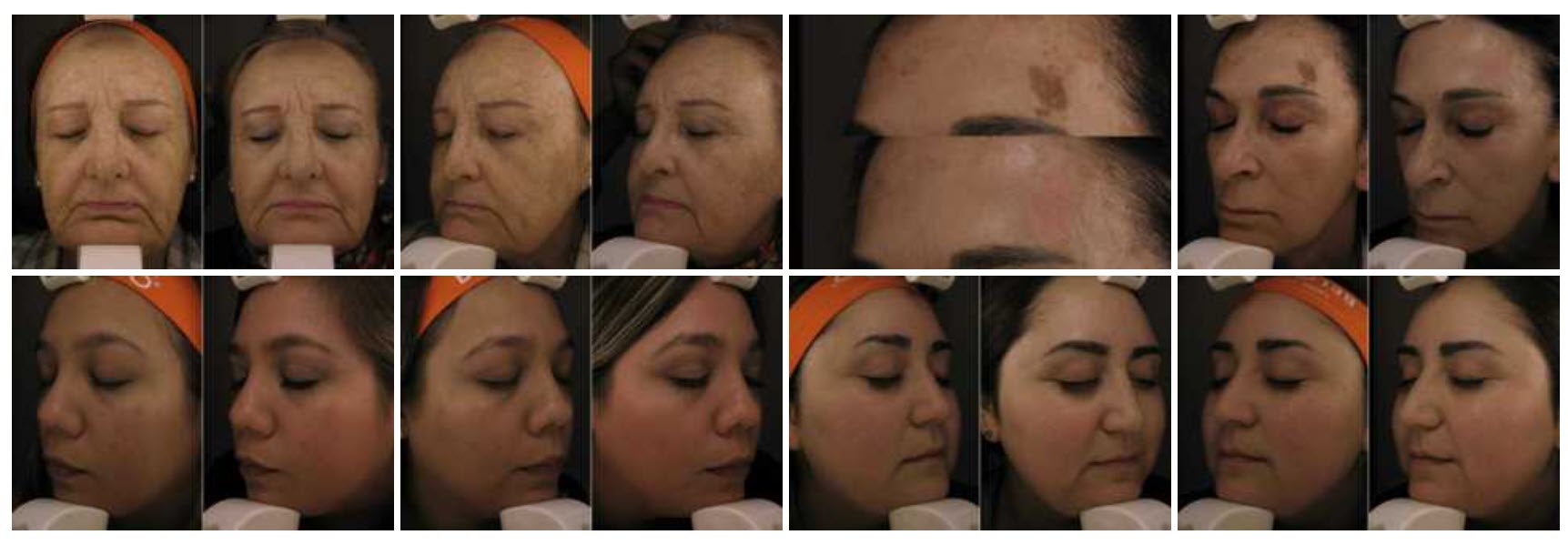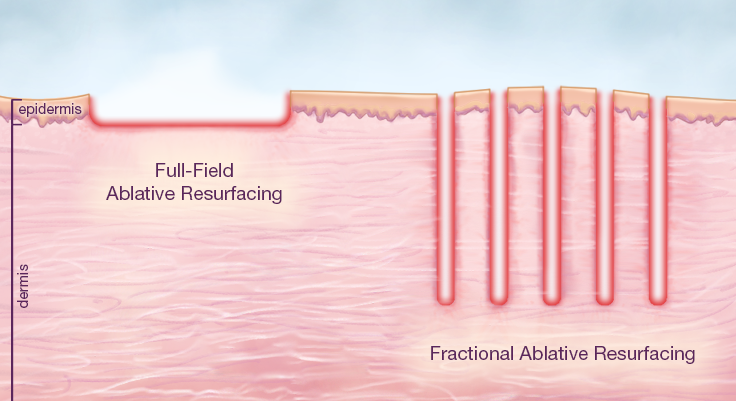

Dermablate: Laser Skin Resurfacing
The name may sound intimidating, but the Dermablate (aka Erbium laser) resurfacing process is a popular and effective way to rejuvenate the skin. For men and women looking to remove unsightly blemishes or tighten up the skin’s elasticity, the Dermablate process can enhance the look of your natural skin and promote collagen production. See Dermablate before and after images here.


The Laser Skin Resurfacing Process
Dermablate is one of the highest-performing resurfacing treatment lasers on the market. It is safe, gentle, and offers a precise skin treatment process with minimal downtime and excellent results. Dermablate sessions can treat a wide array of skin concerns such as:
- Loss of firmness
- Wrinkles
- Fine lines
- Scars
- Uneven texture
- Enlarged pores
- Hyperpigmentation such as freckles
- Age and sunspots
- Benign skin lesions (warts, moles, etc.)
For those looking to clear up their skin with a minimally invasive process that offers proven results, Dermblate is an excellent solution.
How Does The Treatment Work?
The Dermablate process uses a fractional laser to offer a highly precise “ablation” of the skin. The machine uses this laser technology to penetrate the epidermis and dermis without damaging the skin surface. It provides skin rejuvenation via treating wrinkles and scars, and almost any part of the face and body can be treated. While there is minimal downtime and patients can see great results with the treatment, some risks are involved. These risks include:
- Skin color changes
- Blisters or scars
- Infection
- Mild redness or swelling
Ablative vs. Non-Ablative


There are two types of laser treatments called ablative and non-ablative. The primary difference between these two laser treatments is that ablative lasers remove the top layer of skin, while non-ablative lasers heat the underlying skin tissue so that your body will produce new collagen.
Ablative lasers physically impact the outer layers of skin. This process leads to a physical change and remodeling of the skin to increase collagen production to rebuild and regrow the skin. A process that uses ablative laser technology requires a longer recovery time, as the skin must heal from treatments.
Non-ablative lasers are less invasive and don’t physically damage the layers of your skin. Instead, a non-ablative laser treatment stimulates your skin to produce more collagen and targets fine lines and any imperfections. Since this treatment is non-invasive, multiple treatment sessions may be necessary to achieve modest clinical results.
Depending on your needs, with Dermablate, you are offered a full range of skin resurfacing applications, from either full ablative or non-ablative. Speak to your certified plastic surgeon before scheduling any laser skin resurfacing to make sure you pick the right procedure for you.
Skin Laser Resurfacing Results:
While it may take 3-4 weeks for the entire treatment results to present themselves, patients will experience tighter skin, reduced wrinkles, and a smoother complexion. Using the ablative laser option, you will experience the disappearance of fine lines and small wrinkles, and it will remove decades from your face and provide a youthful glow. The non-ablative laser resurfacing treatments may take multiple times and sessions for more dramatic results.
Learn More About Dermablate At Vida
If you want to rejuvenate your skin but don’t know which type of laser treatment is right for you – contact Vida Wellness and Beauty today. The only way to know what is suitable for your unique skin goals is to discuss them with a qualified cosmetic surgeon who will make a recommendation based on your skin type and cosmetic goals. Click here to schedule a free virtual consultation or learn more about Dermablate pricing here.
